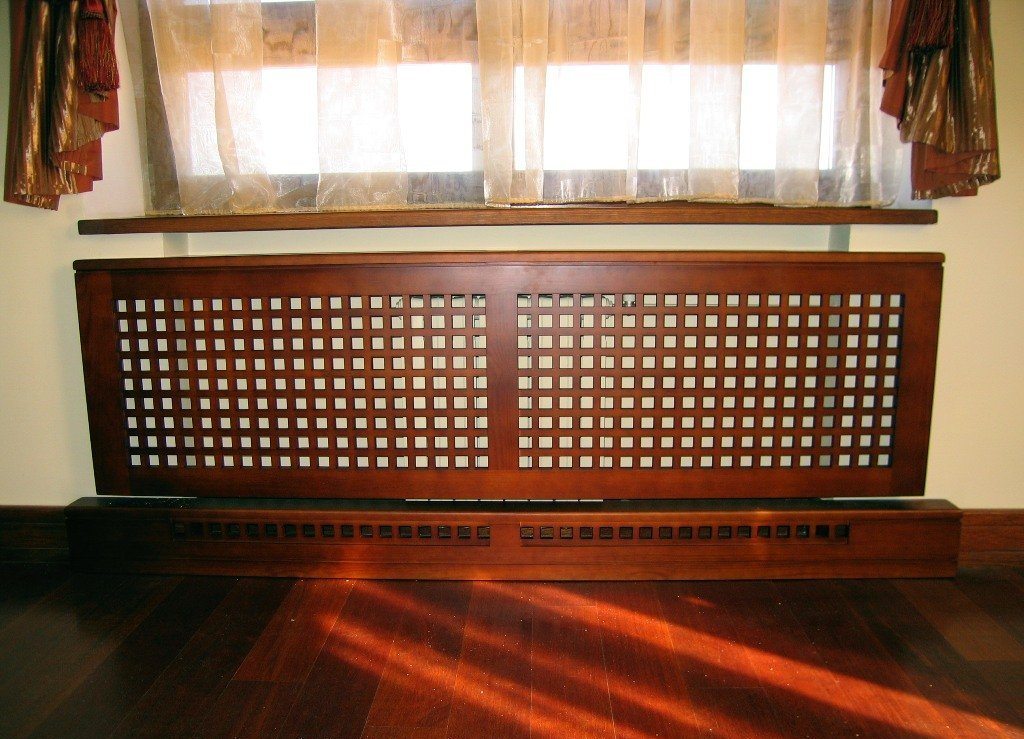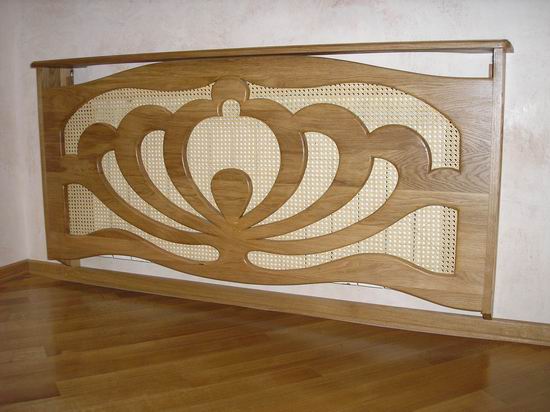How to close heating pipes: experimenting with color, material and shapes

Any pipes do not fit into the interior, so you have to solve the problem: how to close the heating pipes.
During repairs, when leveling walls with plasterboard or other materials, there is an excellent opportunity to hide pipes behind such a coating.
There are many ways to make the design not just invisible, but an exclusive and stylish interior detail. In addition, open heating pipes and radiators have a bad effect on health with their direct infrared radiation, and their masking makes it diffuse and harmless. Therefore, the usual old method of making them invisible by painting them to match the color of the walls is unacceptable.
Material selection









Fabric tapes require regular washing, so it is better to stick Velcro on their ends and nail it to the frame, and not the tape itself.
Choosing the optimal design
For functional sewing of pipes, it is necessary to take into account:
- Their quality and service life - only reliable ones can be closed tightly. The question of how to close the old heating pipes is solved unambiguously: it should be closed with the possibility of disassembling the lining or with removable boxes. Non-welded pipe joints are weak points in the heating system (the potential for leakage at the joints). Here, too, it is necessary to provide for quick disassembly or direct access.
- The presence of nodes or devices on the pipes: meters, filters, valves that require direct access. They must be accessed through hatches.
- The location of the pipe relative to the wall: in a specially made niche, and if it protrudes, then how much. In the first case, the pipe can simply be closed with removable shields, and in the second case, the design depends on the size of the protrusion: by the thickness of the skin or more. But in this case, a construction with a special frame made of a profile or rails and bars is necessary.
How and with what to close the pipes yourself
Necessary tools and materials
- for installing metal parts and rack profile: guides, screwdriver, drill, bolts;
- to install a structure made of wood, plastic, MDF, chipboard, drywall, plywood, you will also need a hacksaw, self-tapping screws, a dowel - nails, a hammer, liquid nails,
Measurements for installing the frame are carried out in the same way as for leveling the walls: taking into account the size of the pipe protrusion relative to the wall. But the profile or beam of the frame should protrude slightly above the pipe for the circulation of warm air, that is, be slightly wider than the diameter of the pipe plus its distance from the wall. In this case, the protective material will not touch the pipe and ventilation is ensured.
Frame device
The frame can have any geometric shape, but rectangular is more convenient.
- Along the wall on the floor for the profile, we fix the guide with screws or liquid nails.
- Then we attach the same guide, aligned with a horizontal level, to the wall above the pipes.
- Vertically insert the sections of the profile corresponding to the required height 40 cm apart into the guide in the floor and fix with screws.
- Then we put another upper guide on them, fix them with screws - we get a strong, stable fence.
- To close the top of the box, we also insert pieces of the profile into the guide on the wall and fasten it to the profiles of the fence with a “mustache”. The frame is ready.
If the pipes and radiators protrude forward almost at the level of the window sills, we will make the lining a continuation of the window sills and at the same height.
Box installation
- Continuous sewing of the frame with plastic, MDF and other sheet materials with open places for their fastening makes the structure convenient for possible dismantling.
- A solid lining with inspection hatches that provide full access to the pipes needs special doors that can be fixed with furniture magnets.
- Removable boxes have a special few fasteners in places convenient for access and cover old problematic pipes that require constant revision.

Combined construction - solid lining plus a removable box, possible with a complex arrangement of pipes
Note!
For optimal circulation of warm air, the front screen is made with a lattice.
So, the question of how to close radiators and pipes is solved simply if there is a desire, time and the necessary information.
- How to make a drain in the bath with your own hands
- Water ball valves: types, classification, device and principle of operation
- Sewerage in a private two-story house - scheme
- Piping in the bathroom: diagram and installation principle
- How to hide pipes in the bathroom with your own hands
- Repair and replacement of drain fittings of the toilet bowl
- Plastic pipes for sewerage in a private house: reliability and quality

 Live Journal
Live Journal Facebook
Facebook Twitter
Twitter